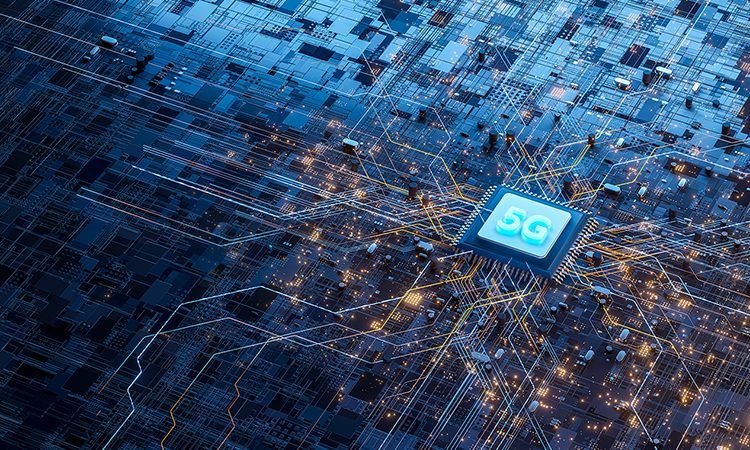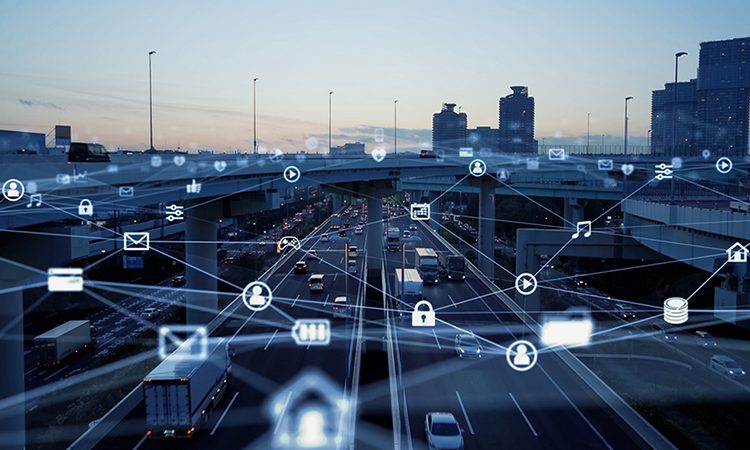Realising the power of 5G connectivity
- Like
- Digg
- Del
- Tumblr
- VKontakte
- Buffer
- Love This
- Odnoklassniki
- Meneame
- Blogger
- Amazon
- Yahoo Mail
- Gmail
- AOL
- Newsvine
- HackerNews
- Evernote
- MySpace
- Mail.ru
- Viadeo
- Line
- Comments
- Yummly
- SMS
- Viber
- Telegram
- Subscribe
- Skype
- Facebook Messenger
- Kakao
- LiveJournal
- Yammer
- Edgar
- Fintel
- Mix
- Instapaper
- Copy Link
Posted: 13 March 2023 | Reza Akhavan - Connected Places Catapult | No comments yet
Dr Reza Akhavan, Technology Innovation Manager (Senior Technologist) at Connected Places Catapult, shares his thoughts on the significance of 5G connectivity in the public transport sphere and discusses key projects that Connected Places Catapult has been working on to further advance the implementation of 5G.


What is Connected Places Catapult, and what work is the agency currently doing in the 5G space?
Connected Places Catapult (CPC) is the UK’s innovation accelerator for cities, transport and place leadership. We provide impartial ‘innovation-as-a-service’ for public bodies, businesses and infrastructure providers to catalyse step-change improvements in the way that people live, work and travel. We connect businesses and public sector leaders to cutting-edge research to spark innovation and grow new markets. We run technology demonstrators and small- and medium-enterprise (SME) accelerators to scale new solutions that drive growth, spread prosperity and reduce carbon emissions.
We connect businesses and public sector leaders to cutting-edge research to spark innovation and grow new markets”
Specifically considering 5G, I see this as a transformative technology that will play an important role. That’s why CPC has been focused and involved in lots of 5G-related projects, such as the Milton Keynes 5G Create project, which is using 5G to trial advanced mobility and connected autonomous vehicles, and we have also been involved in some work around 5G connected drones and where they can be applicable.
Another project that we have been working on is the Infralink programme, which is rolling out 4G and 5G connectivity in Scotland and analysing the barriers that arise when rolling out the technology. We’ve also participated in similar projects; CPC previously worked on Hyper-Connected, which was focused on rolling out 5G in big cities, and the difficulties and challenges that we had in achieving that. We have published all of the associated reports, related data and playbooks from this project, which can be found on our website. Furthermore, the Digital Connectivity Infrastructure Accelerator (DCIA) is another project that we have been involved in, which addresses the possibilities of using public assets to support the rolling out of 5G. This is just a brief overview of the work that CPC has been involved in relating to 5G.
5G technology has experienced a significant increase in both development and adoption in recent years. In what ways is the public transport sector utilising 5G technology?
What makes 5G different from previous generations is revolutionary elements, which, for the first time, is going to provide ultra-low latency of reaction time and support a huge number of Internet of Things (IoT) devices”
First, I think that we should consider, when we say 5G, what do we mean? Approximately every 10 years, we get a new generation of mobile technology. So, it’s gone from 2G to 3G or 4G and, now, 5G. Usually, when we move from one generation to another, we have gotten faster and increased the boundaries, and this is the trend that is going to continue – as these are elements, which we call evolutionary elements, that are just part of the natural trend. However, what makes 5G different from previous generations is revolutionary elements, which, for the first time, is going to provide ultra-low latency of reaction time and support a huge number of Internet of Things (IoT) devices. These are the new things that have been added to previous generations, and now we see all of them under the umbrella of 5G.
I see 5G as an enabling technology. Usually, 5G, artificial intelligence (AI) and IoT are ranked at the top of the list of emerging technologies. I believe that 5G is, in fact, enabling technologies like IoT and AI, so that they can then add more value to all of the other technologies, and it can create a greater potential to transform the transport sector, in particular, into a sustainable multimodal system which makes the smart city concept a reality. Therefore, this is one of the sectors that CPC has been involved in – smart cities and transport. For example, by integrating 5G and IoT to the sensors that are deployed in parking spaces, vehicles or autonomous vehicles, this will help drivers to find a parking space automatically. Another example is the vast majority of sensors that are installed on trains, cars or buses, if they can report faults automatically, in real-time, this then helps to reduce vehicle downtime.
These are a few examples of how these technologies can work together to improve the efficiency of public transport. As I said, it’s not just faster technology or better mobile broadband. 5G has better coverage than previous technologies and can enable connected cars and buses to operate in a congested and potentially dangerous high-speed area. Previous generations (like 2G and 3G) were not able to support this, but this is happening in 4G, so it is necessary in 5G. Thus, 5G is also capable of utilising AI software applications that are already available and running. Overall, 5G is offering all of these features and can help to transform the public transport sector.


How does improved connectivity support efforts to enhance the passenger experience?
We need to deliver people-centric mobility in multimodal transport, which means a smooth transition from one mode of transport to another… These are the problems that 5G can solve”
With regards to the passenger experience, I would say one of the most important barriers that prevent people from using public transport is the lack of seamless transactions from door-to-door. For example, if people want to take the bus, car, tube, bike, e-bike, scooter, any of these different modes of mobility, they have to pay using different payment systems, in a separate manner. So, we need to deliver people-centric mobility in multimodal transport, which means a smooth transition from one mode of transport to another, making sure that the registration of payments is as seamless and secure as possible. These are the problems that 5G can solve.
In addition, 5G can create a kind of intelligent infrastructure across our transport network by connecting all of the sensors that are deployed in traffic lights, signs and car parks together. It creates a kind of ubiquitous coverage that can be tailored for transport, so that we can form a smart traffic management system. This will help to reduce congestion by providing us with better traffic flow and safer roads. For example, if an accident happens down the road, people can be notified of this much quicker, in real-time, while travelling on the same road, rather than learning too late when it is broadcasted on the radio.
Another issue than can be solved using sensors is related to maintenance. Sensors in buses or any form of public transport can provide us with the ability to undertake predictive maintenance, rather than reactive maintenance. For example, if a person has sensors in their bike which measure the vibration of the bike while they are cycling, they can collect data related to the road surface, such as if it is bumpy or if there are any gaps. By collecting this data and analysing it, it provides a good source of information that can be used to improve the road before it gets worse and subsequently avoids causing damage to the vehicles driving across it. This will also help to improve the safety of passengers, as well.
Furthermore, another aspect that 5G connectivity can support is enabling more driverless or autonomous cars on the roads. If a very difficult situation was to occur, for example, which the driverless vehicle’s predefined algorithms are not able to deal with, 5G connectivity can allow someone to remotely take control of that vehicle. In order to do this, they need to have access to good quality video, provided by the cameras around the vehicle. For this to be possible, they would require very good bandwidth and ultra-low latency, to a matter of milliseconds, so that when the steering wheel is changed, it happens in real time. Therefore, in situations like this, 5G can play a very important role.


Related topics
5G & Transport Communications, Accessibility, Active travel, Artificial Intelligence, Connected & Autonomous Vehicles, Infrastructure & Urban Planning, IoT (Internet of Things), Micro-mobility, Public Transport
Issue
Issue 4 2022
Related modes
Bikes & Scooters, Bus & Coach, Rail
Related cities
Milton Keynes
Related countries
Scotland, United Kingdom
Related organisations
Connected Places Catapult (CPC)
Related people
Reza Akhavan








